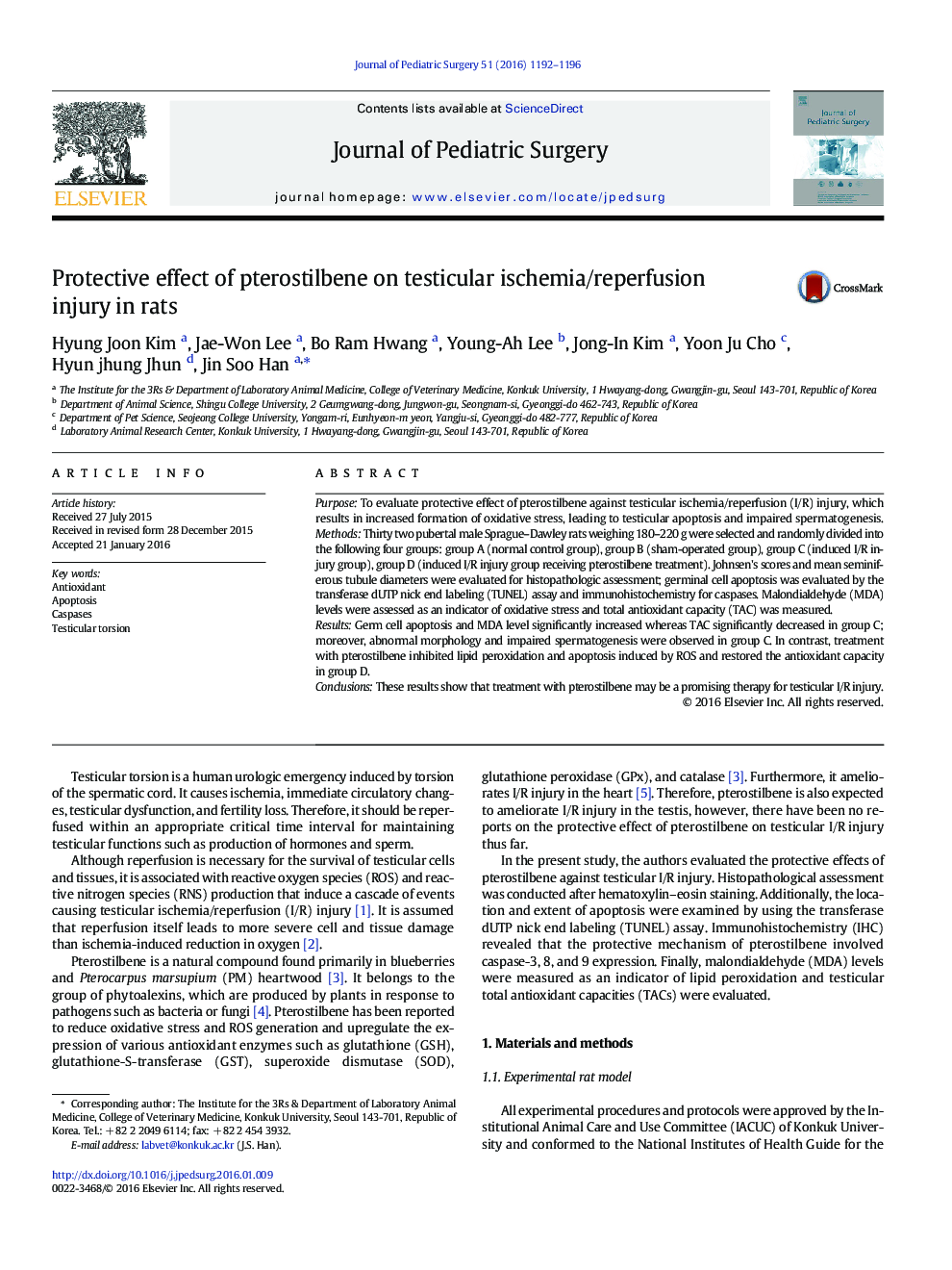| Article ID | Journal | Published Year | Pages | File Type |
|---|---|---|---|---|
| 4154802 | Journal of Pediatric Surgery | 2016 | 5 Pages |
PurposeTo evaluate protective effect of pterostilbene against testicular ischemia/reperfusion (I/R) injury, which results in increased formation of oxidative stress, leading to testicular apoptosis and impaired spermatogenesis.MethodsThirty two pubertal male Sprague–Dawley rats weighing 180–220 g were selected and randomly divided into the following four groups: group A (normal control group), group B (sham-operated group), group C (induced I/R injury group), group D (induced I/R injury group receiving pterostilbene treatment). Johnsen's scores and mean seminiferous tubule diameters were evaluated for histopathologic assessment; germinal cell apoptosis was evaluated by the transferase dUTP nick end labeling (TUNEL) assay and immunohistochemistry for caspases. Malondialdehyde (MDA) levels were assessed as an indicator of oxidative stress and total antioxidant capacity (TAC) was measured.ResultsGerm cell apoptosis and MDA level significantly increased whereas TAC significantly decreased in group C; moreover, abnormal morphology and impaired spermatogenesis were observed in group C. In contrast, treatment with pterostilbene inhibited lipid peroxidation and apoptosis induced by ROS and restored the antioxidant capacity in group D.ConclusionsThese results show that treatment with pterostilbene may be a promising therapy for testicular I/R injury.
